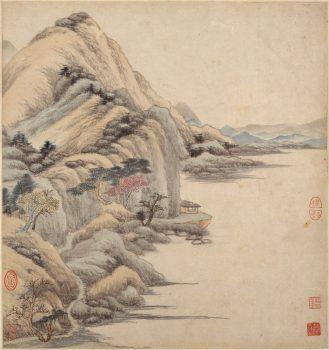You ask me why I dwell in the emerald mountains. I smile and make no reply, my heart at ease. Peach blossoms flow downstream on the water, vanishing without a trace. It is another realm, beyond the human world.
—Li Bai, one of China’s most celebrated poets
For centuries, the Chinese have exalted and reveled in beautiful landscapes. Ancient China was a land where human and divine coexisted, where Daoist immortals wandered mist-shrouded mountains, and spiritual practitioners meditated in deep caves.
An album leaf in “Landscapes in the Manner of the Ancients,” by Wang Jian, Qing Dynasty (1644–1911). Edward Elliott Family Collection, gift of Douglas Dillon Gift, 1989. Wang Jian’s paintings express the vision of a man steeped in tradition. A member of the educated elite, he was able to study private collections of art from a young age. In this album, each leaf recalls a specific old master, yet Wang’s distinctive brush mannerisms transform the model. The Metropolitan Museum of Art






